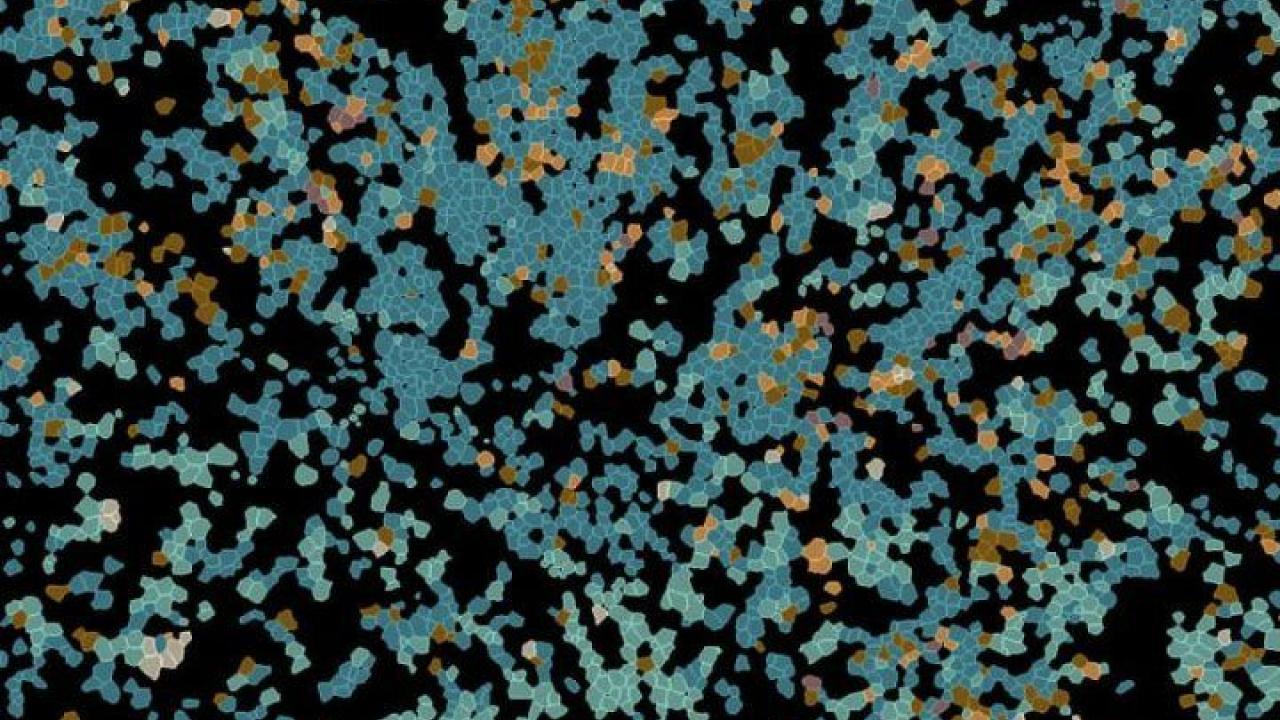
The authors used a new tissue imaging technique to identify each cell in the lymph node and to measure its activation and function. This image shows various types of immune cells in the lymph node, each colored based on its cell type. Image by Spitzer Lab
Cancer treatment routinely involves taking out lymph nodes near the tumor in case they contain metastatic cancer cells. But new findings from a clinical trial by researchers at UC San Francisco and Gladstone Institutes shows that immunotherapy can activate tumor-fighting T cells in nearby lymph nodes.
The study, published March 16, 2023 in Cell, suggests that leaving lymph nodes intact until after immunotherapy could boost efficacy against solid tumors, only a small fraction of which currently respond to these newer types of treatments.
Most immunotherapies are aimed only at reinvigorating T cells in the tumor, where they often become exhausted battling the tumor’s cancer cells. But the new research shows that allowing the treatment to activate the immune response of the lymph nodes as well can play an important role in driving positive response to immunotherapy.
“This work really changes our thinking about the importance of keeping lymph nodes in the body during treatment,” said Matt Spitzer, PhD, an investigator for the Parker Institute for Cancer Immunotherapy and Gladstone-UCSF Institute of Genomic Immunology and senior author of the study.
Lymph nodes are often removed because they are typically the first place metastatic cancer cells appear, and without surgery, it can be difficult to determine whether the nodes contain metastases.
“Immunotherapy is designed to jump start the immune response, but when we take out nearby lymph nodes before treatment, we’re essentially removing the key locations where T cells live and can be activated,” Spitzer said, noting that the evidence supporting the removal of lymph nodes is from older studies that predate the use of today’s immunotherapies.
Aim for the Lymph Nodes, Not the Tumor
Researchers have largely been working under the assumption that cancer immunotherapy works by stimulating the immune cells within the tumor, Spitzer said. But in a 2017 study in mice, Spitzer showed that immunotherapy drugs are actually activating the lymph nodes.
“That study changed our understanding of how these therapies might be working,” said Spitzer. Rather than the immunotherapy pumping up the T cells in the tumor, he said, T cells in the lymph nodes are likely the source for T cells circulating in the blood. Such circulating cells can then go into the tumor and kill off the cancer cells.